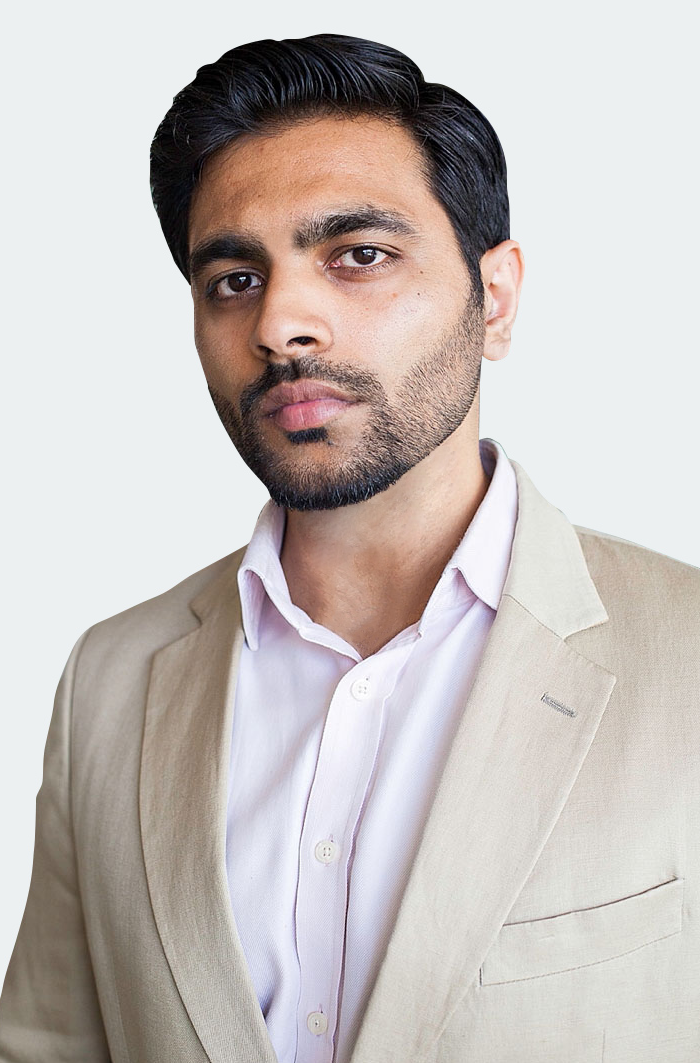the Polymath | Unlocking the power of human versatility
May 10, 2019


text
— contents —
~ about: the q + a
~ about: the polymath concept
~ q + a
~ book featurette
~ pages
~ about: the author
~ about: the book
~ pages
~ book: sections
~ reading
— the book —
book title: the Polymath
deck: Unlocking the power of human versatility.
author: by Waqas Ahmed
year: 2019
this book on Good Reads | visit


about | the q + a
A topical dialogue between Ray Kurzweil + author Waqas Ahmed — a background interview for his non-fiction book the Polymath — is printed here in-full. For the book’s details and website please see below.
The book the Polymath by author Waqas Ahmed features chapters with quotes from inventor + futurist Ray Kurzweil — on the subject of being a well-rounded thinker and activist for innovation. Book excerpts are also printed below.
Ahmed discusses the value of having a wide-ranging background. He believes that for today’s society to thrive, modern people should be encouraged to expand their knowledge, interests, and skills across multiple fields.
image | left
Portrait of author, journalist, and artist Waqas Ahmed.
photo: Adrian Fisk Photography
about | the polymath concept
The word polymath describes a person who studies many topics, across a wide array of interests. Traditionally, a polymath is someone with formal education from schools + books — combined with self-guided learning. A polymath is a person who develops their natural talents and gains much know-how.
Polymaths love learning and discovery in all types of fields: the arts + sciences, teaching + outreach, math + engineering, design + architecture, futurism + invention, government + social studies.
For example, one historic polymath is the famous artist, writer, and scientist: Leonardo da Vinci — who lived in classical Italy during the ancient time of pioneers called the Renaissance. He was known for his ability to: sculpt + paint, observe nature, draw anatomy, study motion, build machines — plus develop his critical thinking skills. He penned a vast library of sketch-books illustrating his great inventions: like an archaic helicopter, parachute, clock, and an armored car.
pol • y • math
(n) A person of deep education and learning in several fields of study.

— q + a —
A dialog with best selling author, inventor, futurist Ray Kurzweil.
by Waqas Ahmed
Waqas Ahmed | How do inter-disciplinary researchers handled hyper-specialized science + exponential technologies?
Ray Kurzweil | Increasingly, the solutions to problems are found at the intersection of multiple fields. For example, my work in speech recognition involved speech science, linguistics, mathematical modeling psycho-acoustics, and computer science. The cutting edge of medical research today is at the intersection of biology and computer science. Experts in highly specialized fields can be part of a team, but the team leader needs to bridge multiple disciplines.
Waqas Ahmed | How will singularity affect the human’s ability to be creative?
Ray Kurzweil | We have 300 million of neo-cortical modules in our neo-cortex, the region of the brain responsible for thinking. Each of these modules can learn, recognize, and remember a pattern. These modules connect themselves into elaborate hierarchies. Our neo-cortex creates these hierarchies itself based on our own thinking.
In the decade of the 2030s, I believe we’ll expand its capacity by connecting our neo-cortex to the web’s cloud of information — using nano-bots (microscopic robots) in the brain sent non-invasively through the body’s capillaries.
Remember what happened the last time we added more neo-cortex, when we developed into thinking humans — and evolved the frontal cortex of our brain? We invented language, art, and science. When we again add additional neo-cortex in the cloud, we’ll be virtually adding more levels of cognition, memory, critical thinking ability. The result will be: new forms of expression even more profound than our art + tech of today.
This expansion won’t be limited by an enclosure (our head). We’ll be using an information processing mechanism that’s millions of times faster than our brain by itself. We’ll be free to grow our thinking exponentially, ultimately expanding our intelligence billions-fold. That’s my definition of the “singularity.”
Waqas Ahmed | How will we be able to retain our sense of unique individuality?
Ray Kurzweil | We’ll share our neo-cortical extensions in the cloud when we want — or keep them private when we want — keeping our individuality, which will become even more unique than today.
Waqas Ahmed | What will polymath people of the future look like in year 2050, how will they help society?
Ray Kurzweil | With only 300 million pattern recognition modules in our neo-cortex, it is difficult to become a master of more than one field. By expanding our neo-cortex into the web’s cloud, we’ll be able to master multiple fields. That will greatly increase our ability to innovate. Only innovation is able to solve humanity’s challenges.

watch | book featurette
watch | short video
A book featurette + short video by Waqas Ahmed at the National Gallery in the United Kingdom, on themes from his book the Polymath.
His book was launched at the museum’s celebration event: the 500th anniversary of renowned + classic polymath Leonardo da Vinci.
on the web | pages
the Polymath | home
Wiley | book: the Polymath
about | the book
Every human is born with deep potential. So why do parents, schools, and employers restrict people with multiple talents + interests — and bully them to specialize in just one?
People are told a myth. Specializing is not the only way to pursue truth, identity, or a field. Specialization is out-of-date: fostering ignorance, exploitation, disappointment — while stalling creativity, opportunity, and progress.
Through dialogs with top historians, futurists, philosophers, and scientists: book author Waqas Ahmed weaves together a narrative of the past + a vision for the future — to disrupt society’s dysfunctional system of hyper-specialization.
In his book — the Polymath — Ahmed shows there’s another way of thinking + feeling. He takes the reader on a journey to re-claim your natural polymath abilities. He supports a cultural revolution in our education and professions — so that all people can express themselves and see the full rainbow of their diverse talents.
Ahmed believes this enhances our personal fulfillment — and encourages a creative society to address complex 21st century challenges.
about | the author
Book author Waqas Ahmed is a diplomatic correspondent, writer, and visual artist. He’s completing post-graduate studies at King’s College.
He was a global reporter at First Magazine — a publication of the international affairs organization First. His exclusive interviews feature international leaders in government, business, and academics.
Ahmed was born + raised in the United Kingdom — he’s travelled through Europe, Africa, the Middle East, and South Asia. For his book the Polymath: his interviews include famous politicians, executives, scientists, and intellectuals.
Curators of his original paintings include the the government of the country of Tunisia, and the Khalili Collections — one of the world’s great collections of art + cultural artifacts.
on the web | pages
First | home
First | First Magazine
the Khalili Collections | home
King’s College | home

book | sections with Ray Kurzweil
Excerpts from the book featuring Ray Kurzweil.
book: the Polymath
author: Waqas Ahmed
table of contents
chapter 1 — intro
chapter 2 — a Timeless People
chapter 3 — Shapers of Our World
chapter 4 — the Cult of Specialization
chapter 5 — re-Conditioning the Mind
chapter 6 — an Alternative System
chapter 7 — 21 st Century Polymaths
chapter 8 — Owners of Our Future
chapter 3 | Shapers of Our World
page: 33
Ray Kurzweil — one of the world’s top futurists — says the leader in any project should be a polymath. He says: “Experts in highly specialized fields can be part of a team. But the team leader needs to bridge multiple disciplines.”
chapter 4 | the Cult of Specialization
page: 112
Human level computer intelligence is predicted by most researchers to occur in the 21st century. Some forecast it will arrive in the next 20 years. Ultimately these super-intelligent software systems will have a super-human level of general intelligence. Ray Kurzweil calls this point the “technological singularity.” What will the implications be for humans? One thing that’s already happening is job automation.
chapter 5 | re-Conditioning the Mind
page: 175
Scientific polymath Ray Kurzweil says the solution to the biggest tech problems of our time is our ability to make connections. He says: “Solutions to problems are found at the intersection of multiple fields. For example, my work in speech recognition involved speech science, linguistics, math modeling, acoustics, and computer science.” This is true for people at the forefront of scientific breakthroughs today. Psychologists have consistently recognize this. Historians have found the same.
chapter 6 | an Alternative System
pages: 241 — 242
Programming our future: Ray Kurzweil — one of the world’s foremost tech polymaths — is a trans-humanist. He believes that in this century we’ll experience the next (and perhaps final) stage of human evolution. It will be the point when people transcend organic biology — called the singularity. It’s a point in the near future when super-intelligent computers take a form that allows them to fuse with our biological anatomy.
This will essentially make us part human + part machine. It’s a form of brain/machine interface. Kurzweil says by the 2030’s microscopic robots (called nano-bots) will interact with our biology to extend human experience by creating virtual reality. These billions of nano-bots will also extend human intelligence.
The fusion of standard biological intelligence with machine intelligence will mean that humans can develop new cognitive skills — and process large amounts of information with speed + efficiency. Kurzweil says: “By expanding our neo-cortex into the web’s cloud, we’ll be able to master multiple fields. This will increase our ability to innovate.”
Extreme projections about the singularity predict that “post-humans” will be immortal. There’s an increasing movement of trans-humanist scientists. Kurzweil says: “We’ll be able to share in the cloud when we want or stay private when we want. We’ll keep our individuality.” Far from becoming homogeneous robots, Kurzweil says this will make us more unique than we are today. He says this is the future of polymathy.
chapter 7 | 21st Century Polymaths
page: 247
Many of today’s scientific polymaths come from the field of information technology. These visionary pioneers of computer science are synthesizers. For example: inventor and futurist Ray Kurzweil brought together many disciplines in his pioneering book the Singularity Is Near. He predicts exponential progress in computer science, in the future.

on the web | reading
Forbes | 6 Steps: to unleash your inner polymath + thrive at work
Sunday Brunch • by Monocle | weekend read: Waqas Ahmed
— notes —
Ray Kurzweil is Raymond Clyde Kurzweil
Khalili is Nasser David Khalili
